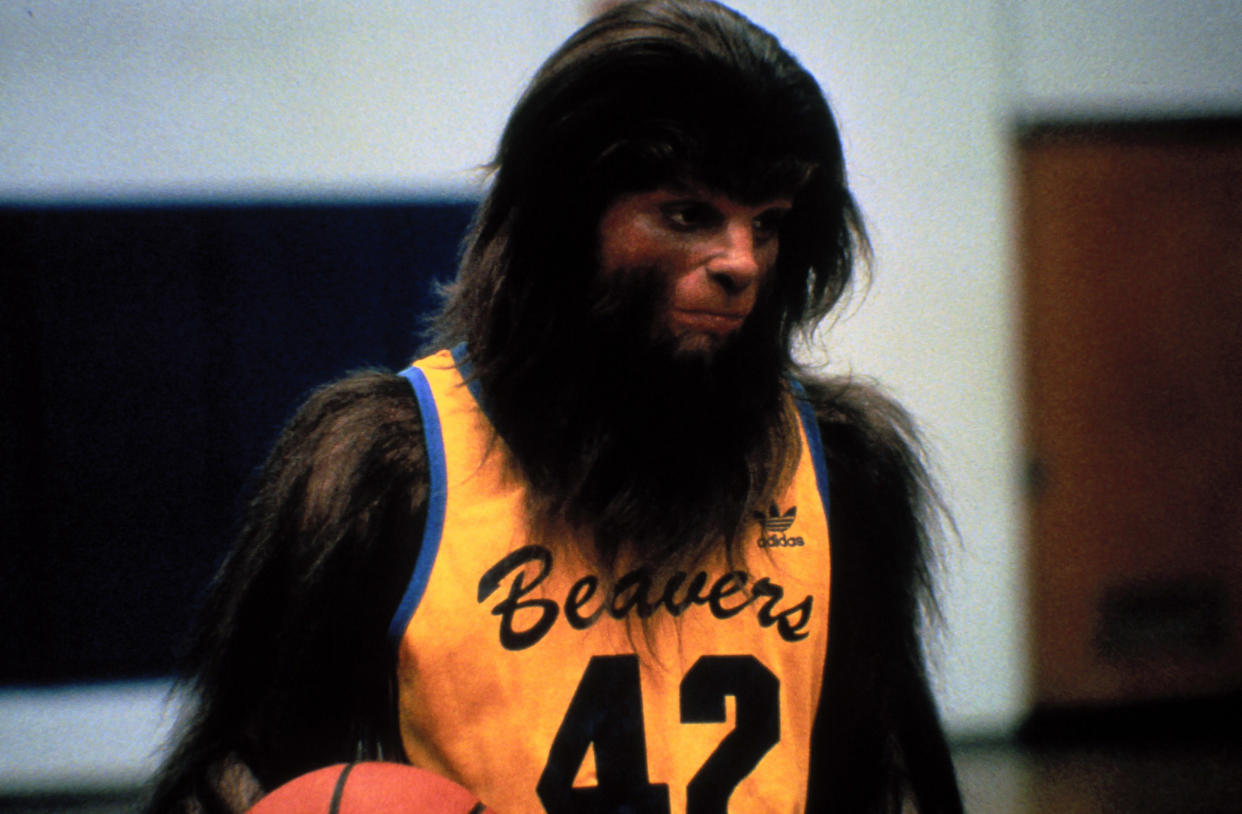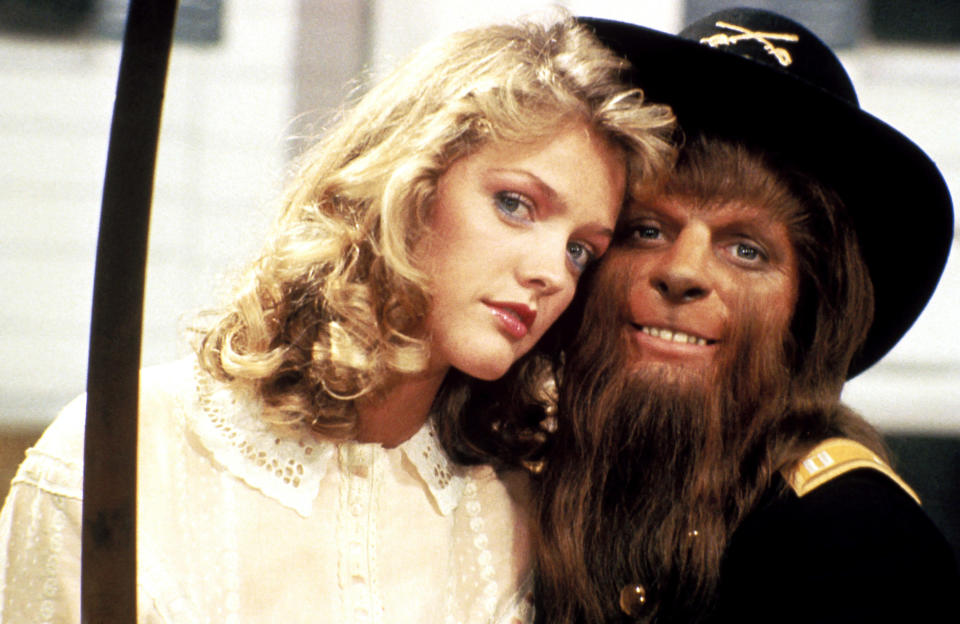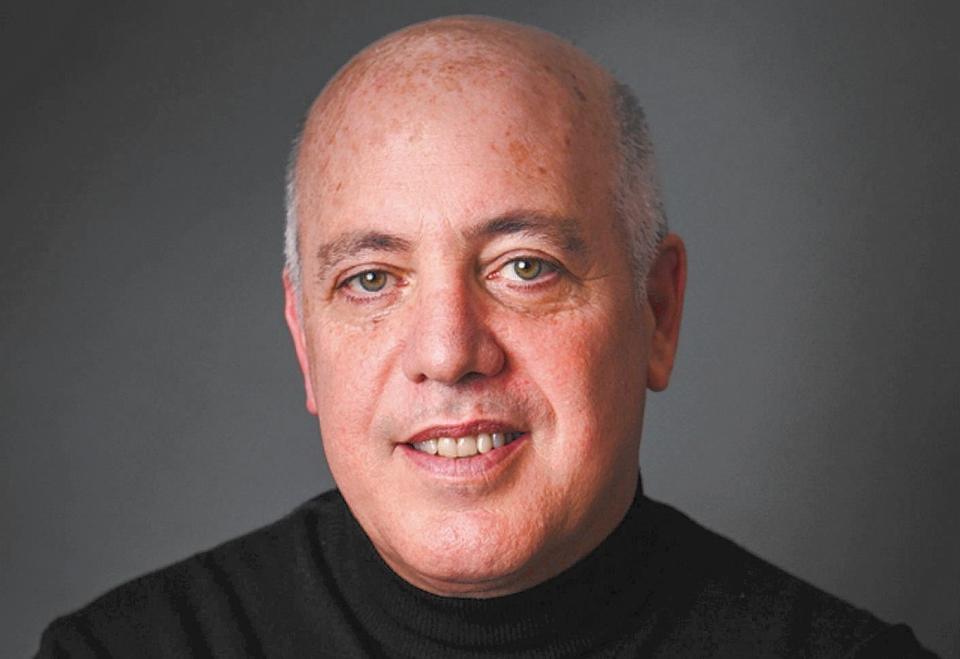'Teen Wolf' at 35: How Michael J. Fox's terrible basketball skills almost ruined the 1985 film

Art imitates life in the opening moments of the fondly-remembered ‘80s favourite Teen Wolf. The first sequence of the bonkers mash-up of sports movie, horror picture and teen comedy finds hapless high school basketball player, Scott Howard — played by quintessential ‘80s leading man Michael J. Fox — hoping to get his team on the scoreboard with a free throw.
But he bricks both that shot and a game-ending Hail Mary throw, and the meek Beavers go on to lose to the swaggering Dragons by 71 to 12. What moviegoers didn’t know when they first flocked to see Teen Wolf 35 years ago on August 23, 1985 was that Fox’s basketball audition went as badly as Scott’s first game. “We hired a basketball coach and took Michael into the gym to see how he played,” remembers Teen Wolf producer, Scott Rosenfelt. “He came into the gym, we threw him the ball and he took a shot. The coach and I looked at each other and went, ‘Uh-oh…’”
Faced with the prospect of building a basketball movie around a star with a serious lack of on-court game, the filmmaking team knew they had to get creative. First off, they signed the then-23-year-old Fox up for an ultra-specific training regimen.
Read more: Ten things you might not know about Back To The Future Part III
“We worked with Michael and made sure he could do certain things like foul shots,” Rosenfelt says. “Obviously, this was not a kid who could shoot three-pointers!” They also arranged the filming schedule to shoot all the basketball material over one very intense — and very long — week. “It was a week of basketball, basketball, basketball. We tried to cast as many actors who could actually play around Michael, and we diagrammed all the action. At the end of the week, the coach turned to me and said, ‘I hate this f****** game.’”

Finally, the movie’s very premise gave them an additional way to cover up Fox’s poor gameplay. Early on in the film, Scott is informed by his seemingly ordinary dad, Harold (James Hampton), that he’s descended from a family of werewolves… but not the scary kind. Instead wolfing out propels Scott to become the most popular kid in school, and a pro-level basketball talent to boot. Whenever the Wolf laces up his sneakers and takes to the court, there’s a ringer underneath all that fake fur rather than Fox.
“We went to Loyola Marymount University in L.A. and found a player on their basketball team who was short — though not as short as Michael — and he had a great jump shot. So he became our double, and put on the wolf suit for certain scenes. But he only ever doubled Michael as the Wolf, never as Scott. Michael really worked at the basketball stuff and did it. Still, I’ll never forgot that first time he took a foul shot and missed the basket by 100 feet! In that moment, I just thought, ‘We start shooting in a week, and we’re screwed.’”
Related: 7 movies that became TV shows
Under different circumstances, Fox’s epic basketball botch would probably have cost him his shot at Teen Wolf. But the actor was fortunate to be in a position where he both wanted to be in the movie and the filmmakers needed him to be in the movie. While Teen Wolf was a genuine smash — one that ranked among the Top 25 of 1985’s highest-grossing movies — unlike many of that year’s hits, it was an independently financed feature from the tiny studio, Atlantic Entertainment Group, which had recently scored a major success with the 1983 comedy, Valley Girl.
Written by then-newcomers Jeph Loeb and Matthew Weisman and directed by sitcom veteran, Rod Daniel, Teen Wolf was shot in four weeks for less than $2 million. It was the kind of seat-of-your-pants production that Rosenfelt and his then-partner, Mark Levinson, specialised in during the ‘80s, when there was still a wide gulf separating indie movies and major studio productions.
“We called it an A-movie head on a B-movie body,” says the producer, who got his start at Crown International Pictures, one of the most famous purveyors of cult and grindhouse fare in the ‘60s and ‘70s. “We were making indie movies that were commercial, and not just art films. That was rarely done at the time.”

As an indie production, Teen Wolf needed a recognisable name front and centre to secure financing. And by the late summer of 1984 — when the film was inching towards production — Fox was recognisable to millions of TV fans as Alex P. Keaton, the breakout character on the NBC sitcom, Family Ties.
With his co-star, Meredith Baxter Birney, on maternity leave from the series, Fox had time in his schedule to shoot Teen Wolf. “Michael was on hiatus, and hadn’t done many movies at the time,” Rosenfelt remembers. “Atlantic came to us and said, ‘Look, we got Michael, but he has to start shooting on this date and you can only shoot for this long. Can you do it?’ Of course, we said yes.”
Read more: Why Back To The Future will never be rebooted
But Fox’s schedule soon ended up getting a whole lot busier. Midway through shooting Teen Wolf, he landed what would become the biggest hit of his career, and one of the defining movies of the decade: Back to the Future. Director Robert Zemeckis wanted Fox to be his Marty McFly from the beginning, but the actor’s strict Family Ties contract resulted in the part going to Eric Stoltz instead.
Several weeks into shooting, Zemeckis decided the Mask star was the wrong fit for Marty, and worked out an arrangement that would allow Fox to headline the film after all. Rosenfelt remembers a two-week period where his star was racing back and forth between the two sets. “He would leave the Teen Wolf set at 4 p.m. and run down the street to South Pasadena, where they were shooting Back to the Future and shoot from 5 p.m. to midnight, and then come back to us at 7 a.m. the next morning. It was very exciting for Michael at the time, and we realised it might help our movie, which, of course, it did!”

Even though Teen Wolf wrapped production well ahead of Back to the Future, Atlantic made the canny business decision to release their film the month after Zemeckis’s July 3, 1985 release date. “We rode the Michael J. Fox wave,” Rosenfelt says. “I think we would have done all right anyway, but having Back to the Future open right before us propelled Teen Wolf into studio numbers.”
The movie wound up grossing over $30 million, finishing ahead of titles like St. Elmo’s Fire and Weird Science. According to Rosenfelt, Weird Science director, John Hughes, carried a grudge about that for years. “John hired me to produce Home Alone, and the first thing he said to me was, ‘Remember when you made Teen Wolf and you beat my movie?’” (For the record, Hughes other 1985 film, The Breakfast Club, did finish ahead of its wolf-ish rival.)
Fox’s presence on the poster was obviously what brought audiences into the theatre. But Teen Wolf’s continued popularity can be credited to the movie’s seemingly incongruous mixture of genre elements. “It was not a horror movie,” the producer emphasises. “The Wolf wasn’t going to go around killing people: He was somebody that everybody liked and could play basketball.” With memories of Rick Baker’s freaky werewolf make-up in 1981’s An American Werewolf in London still fresh in moviegoers’ minds, the Teen Wolf crew designed a hair suit that would be much less terrifying.
“We wanted something that bordered on friendly: It was all about softening the werewolf look and keeping it not goofy, but also not scary. The Wolf suit was woven by hand, and every time that Michael wore it, it itched tremendously. Some days he would take it off, throw it on the ground and say, ‘I’m not putting that thing back on!’”
Read more: Michael J. Fox on Parkinson’s, overcoming fear and the race for a cure
Fortunately, Fox didn’t have to wear the itchy suit for the film’s most dangerous stunt, when the Wolf surfs on the roof of a van while the Beach Boys classic “Surfin’ USA” blasts on the soundtrack. “Mike was in a few of the close-up shots, but the van was actually moving, so we had a stunt double for most of that. We didn’t want to kill Michael falling off a van!”
Teen Wolf’s light tone is reflected in its PG-rating. But Daniel — who died in 2016 — did add add a few raunchy flourishes based on the success of R-rated teen hits like Fast Times at Ridgemont High and Revenge of the Nerds. One early sequence at a house party features a semi-nude couple writhing around on the floor together while covered in whipped cream. And later on in the film, the Wolf lives out Scott’s dream of hooking up with the hottest girl in school, Pamela (Lorie Griffin), who doffs her top in a seduction scene that now makes Rosenfelt cringe.

“It’s not my favourite moment,” he admits of Teen Wolf’s random nude scene. “I think we could have avoided all of it, I really do. But it was a directorial decision — Rod got it in his head that it had to be real and felt that we had to see her. It took a little while [to convince] Lorie Griffin, and she was taped and covered in a way that she felt comfortable. But it’s not fun to have those conversations, and the whole thing was awkward. In a movie like this, I don’t think it was necessary, because you know what’s going to happen: You don’t need to expose a breast to prove what’s going on. I think we’d be a lot more careful today, and probably should have been more careful then.”
Teen Wolf’s success spawned a franchise that included a 1986 Saturday morning cartoon, a 1987 sequel starring Jason Bateman and a 2011 MTV revival series, none of which Rosenfelt was involved with. “When Teen Wolf Too came up, there was an option to discuss the project with my partner and I, but Michael was not going to be involved and we could see where it was headed. It wasn’t so much Jason Bateman as it was other producers getting involved and not understanding the script the way we did.”

So the original Teen Wolf family went their separate ways: Fox stayed with Family Ties until the series finale in 1989, while also juggling a movie career that included hits like the Back to the Future sequels, The Secret of My Success and Doc Hollywood. (The actor was diagnosed with Parkinson’s disease in 1991 and revealed his condition in 1998.) Loeb embarked on a lucrative comic book career and, until recently, was the head of Marvel Television. And Rosenfelt continued to collaborate with Levinson on other “A-movie head/B-movie body” productions like Russkies and Mystic Pizza, before he struck out on his own as a producer, writer and director.
But if Fox ever decides that he wanted to take another shot at Scott’s jump shot, Rosenfelt says he’d return for the future adventures of the first Teen Wolf. “I’d want it to be a different kind of movie,” he says. “I don’t mean an intense drama, but maybe a story where Scott’s the father figure.” And maybe Scott’s son or daughter could excel in another sport besides basketball.
Teen Wolf is available to buy on Amazon Prime, Apple TV, Google Play or YouTube.

 Yahoo Movies
Yahoo Movies 

